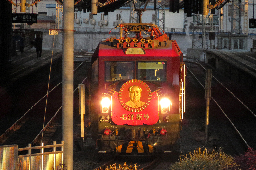This is a good picture showing just how W I D E the gauge was. At 7ft it was the largest gauge ever put into widespread use.
A large and handsome engine who makes a fine living selling Hawaiian shirts direct on a website directly imported from its GeoCities incarnation
I would like someone to foamsplain the advantages and disadvantages of using a wider or narrower gauge, please.
Not a foamer, but I think it mostly comes down to cost. Wider gauge means wider tunnels, which is more difficult and expensive.
Any idea what the interior of passenger cars were like? I know some Indian cars have 3-3 seating. Would these have been even wider?!
The rail gauge was very wide but the loading gauge was relatively similar to other railways. Here's a replica of an early passenger car. Here's a brief history of the Great Western Railway.
There were once plans to build gigantic trains, which would have been neat, however it would have been spearheaded by some of the most evil people to ever exist.




